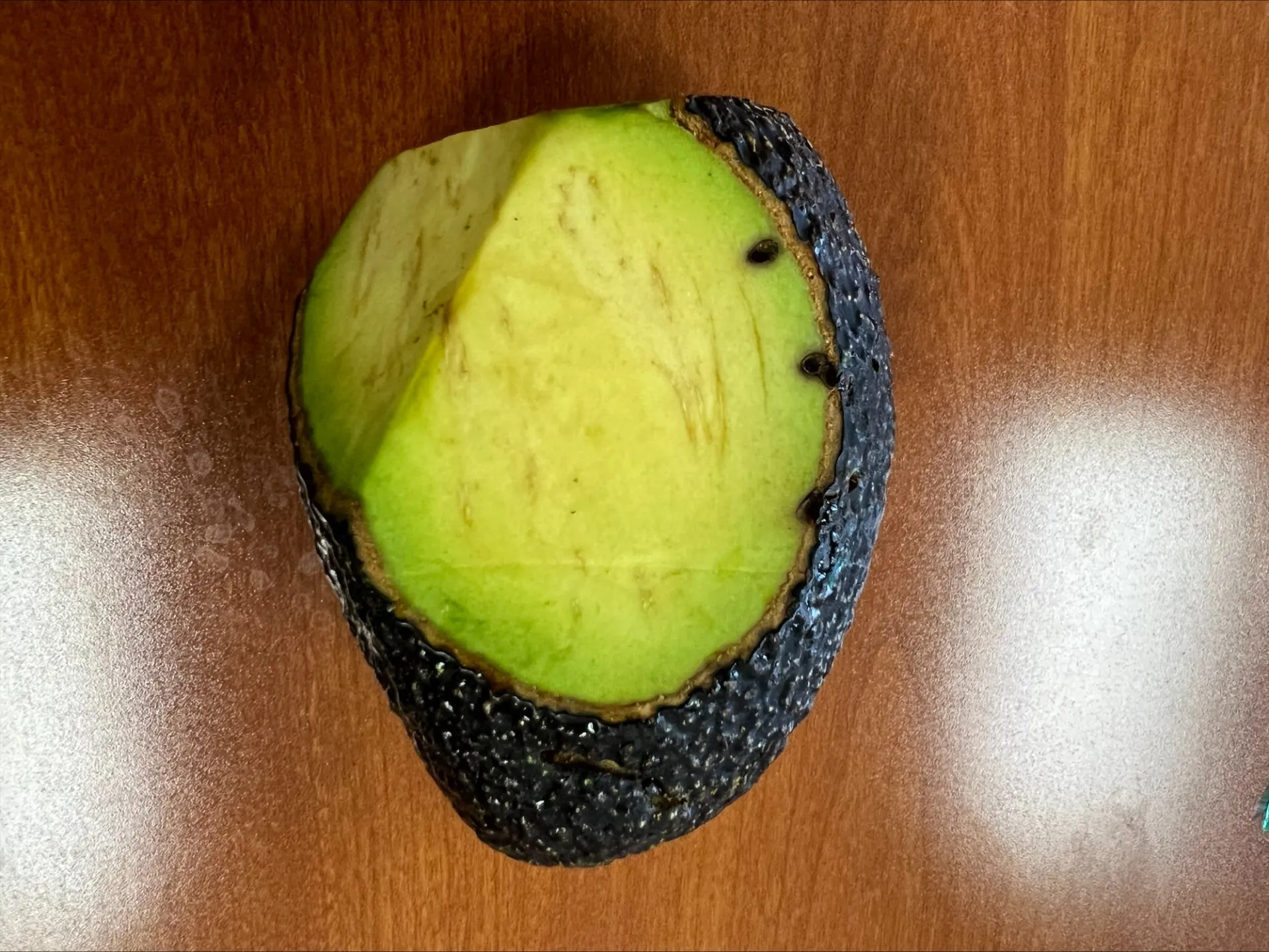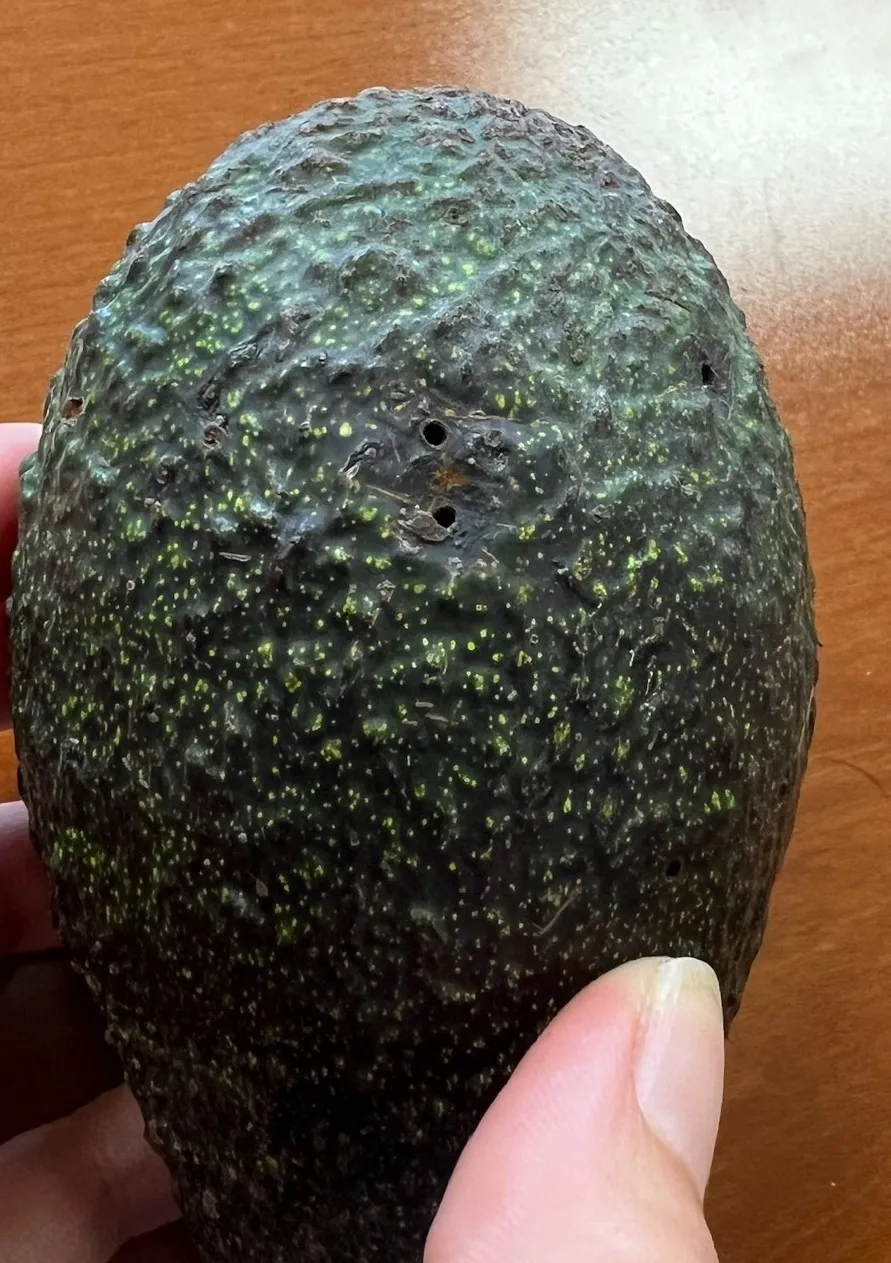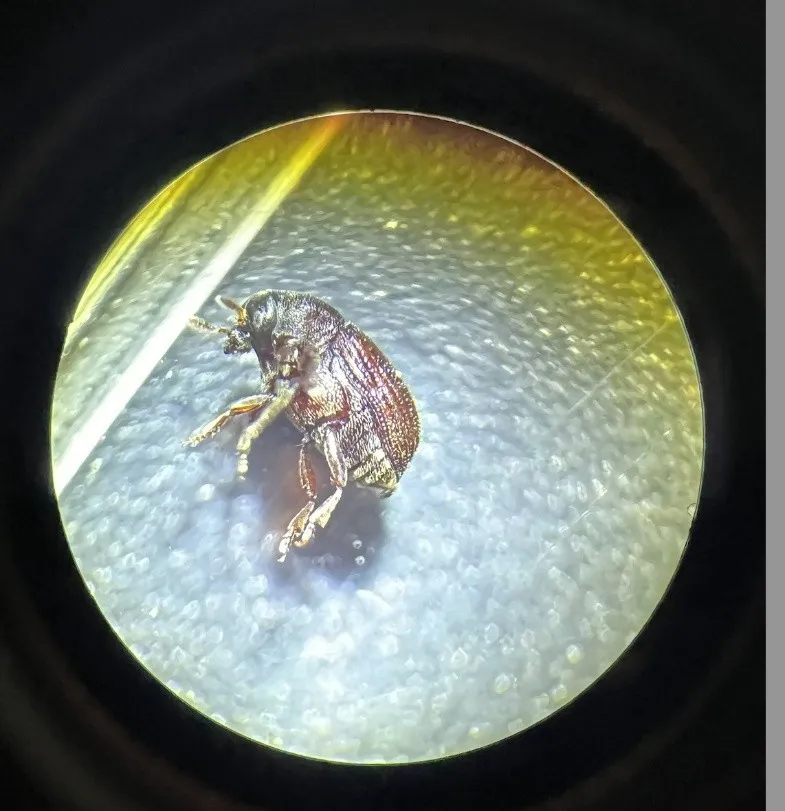It never rains, but………. yeah, this is California, and we have had outbreaks of False Chinch Bug and Stink Bug since July, also whitefly especially on citrus. These insects aren’t so particular about avocado and are more or less generalist pests that feed on a variety of plants. They just happen to feed on avocado because the orchards are up against the hills - where after fire and summer drought, the insects run out of food and look for good feeding. They end up in the avocados. The stink bug has made as far as our garden in Ventura City.
False Chinch Bug
https://ucanr.edu/blog/topics-subtropics/article/false-chinch-bugs-show-when-hills-dry
Stink Bug
https://ucanr.edu/blog/topics-subtropics/article/brown-marmorated-stink-bug-again
Whitefly
https://ucanr.edu/blog/topics-subtropics/article/citrus-leaf-mottling
In addition to these common nuisance pests, we are now seeing some activity of beetles in avocado fruit that is new to us. We were initially concerned that this fruit-boring beetle was going after good fruit hanging in the tree, but it turns out it appears to be going after fruit on the ground.

Beetle Shallow Entry Holes

Beetle Exit Holes
Apparently the beetle didn’t stay long. Maybe didn’t like what it found in the fruit?
Hamutahl Cohen, our Entomology Advisor, and Staff Researcher Maripaula Valdes-Berriz took a look at the beetle under microscopic and came to this tentative identification:
“We believe with about 97% certainty that it belongs to the family Scolytidae (which some say should be the subfamily Scolytinae in the family Curculionidae, a taxonomist debate). The common name is a bark or ambrosia beetle. See this photo I took through the microscope.

Fruit Borer
There are lots of species of bark beetle, this doesn’t look like the bark beetle that is an issue in Florida, the redbay ambrosia beetle, which spreads laurel wilt. It doesn’t look like the polyphagous and Kuroshio beetles that we worry about here, but it's very close in morphology and in taxonomic relation.
If this species behaves like its cousins, it is not tunneling into the fruit to consume it but wants to use it as a substrate to grow fungus or reproduce.”
Right now we don’t have a conclusive identification to genus or species, though Hamutahl remarks it looks like it belongs to the genus Phloesinus. We have seen fruit-boring beetles on downed fruit over the years. They work the fruit, and in the process, accelerate fruit decomposition along with all the bacteria and fungi that are processing fruit in collaboration with their insect counterparts. There are over 60,000 species of ambrosia beetles and most of them are detritovores, meaning they feed on dead matter, or in this case, fruit separated from the tree and on the ground. If you see this beetle or others on ripened fruit, reach out and let us know.
NEW NEWS
It is Pagiocerus frontalis, a bark beetle in the family Curculionidae that loves to reproduce in avocacdo and other Lauraceae fruits. It also reproduces in corn (actually prior to 2019 we didn't even know it fed on avocado, it was thought to be a corn issue). It is native to our region and throughout southern US and South and Central America. It likes to reproduce on the avocado seed at the center of the fruit. It can complete it's entire lifecycle within the fruit. Generally attacks fallen fruit or fruit near to the ground.
ID was confirmed by beetle expert Dr. Jiri Hulcr at Univ of Florida
Read his article in the next Topics in Subtropics Newsletter coming this Fall
https://ucanr.edu/county/cooperative-extension-ventura-county/topics-subtropics
SUBSCRIBE TO THE BLOG: https://ucanr.edu/webform/blog_subscription?source_entity_type=group&source_entity_id=14816

